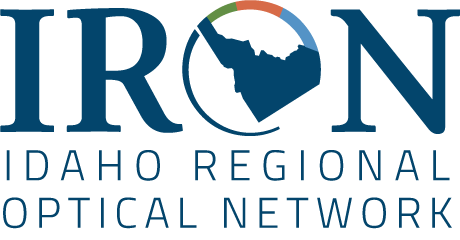What Is IRON?
IRON owns and operates a high-speed optical network that is similar to, but also unlike the ones used by businesses and homes to access the internet. It is different because it provides direct links to other such networks across the nation and world, connecting our higher education, healthcare, public government and not-for-profit organizations. It provides for large data transfers, simulations, and computer modeling in a way that keeps Idaho on a par with other institutions across the US and beyond. For example, Boise State University’s Geoscience department, for example, is involved in cutting-edge weather forecasting and climate change modeling because of IRON and the ability to send large data sets directly to and from campus.
When IRON was first created in 2007, its principal founders were:
- Boise State University
- Brigham Young University – Idaho
- Idaho Hospital Association
- Idaho National Laboratory
- Idaho State University
- State of Idaho
- University of Idaho
- Washington State University
These forward-thinking Charter Associates joined together because Idaho was missing out, unable to efficiently connect to each other and to the nation’s high-speed education and research networks that make up Internet2. While many regional optical networks are funded and operated by their respective states through their university systems, IRON was created as a grassroots initiative and established as a non-profit in order to keep costs as low as possible. Once the IRON network was established, Idaho was able to compete with other research and innovation centers around the country and the world.
Since 2007, IRON has invested millions of dollars creating a reliable, resilient and high performance regional broadband infrastructure across the state. Due to our unique geography in Idaho, it is difficult to provide equal access to all citizens to our digital networks in our remote, rugged terrain. This inequality, known as the digital divide is something that IRON continues to chip away at.
In 2015, IRON completed a statewide upgrade to the speed of the network from 1 gigabits per second to 10 gigabits per second, which included new access points in Twin Falls on the College of Southern Idaho campus and at Idaho Falls connecting associate locations of a variety of universities and research facilities. In 2019, the network was upgraded to 100G statewide.
